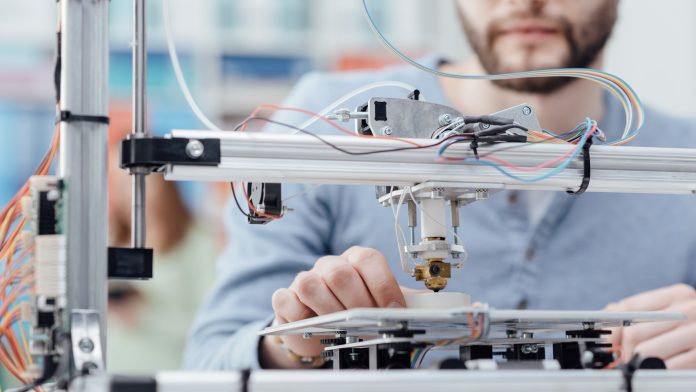Researchers at the University of Nottingham have developed a novel 3D printing method, boosting the performance of custom medical devices and increasing their bacterial resistance.
By applying an innovative 3D printing technique, researchers have figured out how to make custom medical devices such as artificial body parts with built-in functionality that offer greater shape and durability, whilst also cutting the risk of bacterial infection.
The research was carried out by the Centre for Additive Manufacturing (CfAM) and funded by the Engineering and Physical Sciences Research Council.
The team’s full outcomes have been published in Advanced Science.
Dr Yinfeng He, the study lead from CfAM, explained: “Most mass-produced medical devices fail to completely meet the unique and complex needs of their users. Similarly, single-material 3D printing methods have design limitations that cannot produce a bespoke device with multiple biological or mechanical functions.
“But for the first time, using a computer-aided, multi-material 3D-print technique, we demonstrate it is possible to combine complex functions within one customised healthcare device to enhance patient wellbeing.”
The researchers are hopeful that their unique design process can be utilised to 3D-print any medical device that requires customisable shapes and functions. For example, the technique could be modified to produce a highly bespoke one-piece prosthetic limb, or a joint to replace a lost finger or leg that fits the patient seamlessly and enhances their comfort as well as the prosthetic’s durability. Another application could be to print customised pills containing multiple drugs – known as polypills – that are optimised to release into the body in a pre-designed therapeutic sequence.
Additionally, the world’s aging population will result in a greater demand for medical devices in the future. Employing this technique may enhance the health and wellbeing of the elderly and alleviate the financial burden on the government.
To conduct their research, the team used a computer algorithm to design and build 3D printed objects composed of two polymer materials of varying stiffness that also inhibit the build-up of bacterial biofilm. By optimising the stiffness in this way, they succeeded in creating custom-shaped and-sized parts that offer the necessary flexibility and strength.
Existing artificial finger joint replacements, use both silicone and metal parts that offer the wearer a standardised level of dexterity, while still being rigid enough to implant into bone. However, as a demonstrator for the study, the group were able to 3D-print a finger joint offering these dual requirements in one device, while also being able to customise its size and strength to meet individual patient requirements.
By adding further design control, the researchers were able to perform their novel style of 3D-printing with multi-materials that are intrinsically bacteria-resistant and bio-functional, enabling them to be implanted and combat infection without the need for added antibiotic drugs.
The researchers also utilised a new high-resolution characterisation method (3D orbitSIMS) to 3D-map the chemistry of the print structures and to assess the bonding between them throughout the part. This technique allowed them to detect that the two materials were intermingling at their interfaces; a sign of good bonding which means a device is less likely to break.
Before commercialising the method, the team intend to expand its potential applications by experimenting with more advanced materials with extra functionalities, such as controlling immune responses and promoting stem cell attachment.








